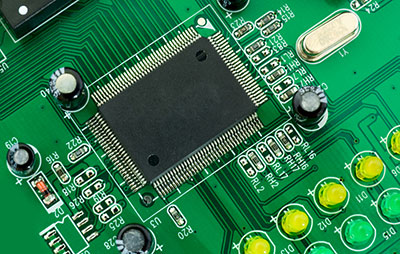The HC-SR501 passive infrared sensor(PIR) is affordable and straightforward electronic equipment. This sensor works by detecting any presence of either animals or human beings. Moreover, it's popular since it can connect to any microcontroller, including the Arduino, Raspberry Pi, and PIC. This article will discuss the HC-SR501 datasheet, the different model types, and how to use one.
Contents
HC-SR501 Sensor Module Configuration
| Pin | Name | Description |
| 1 | VCC | Simply, the VCC pin directs the input voltage into the module. |
| 2 | Low/High
output |
The digital output pulse of this pin will be high(3.3v) when it detects motion. Otherwise, the digital output pulse will be low(0v) if there's no detection of motion. |
| 3 | Ground | Serves as the ground pin of the circuit. |

(a home burglar alarm)
Features and Specifications
- Firstly, the pyroelectric sensor has a 5V recommended voltage.
- Secondly, it has a high/low 3.3v TTL output voltage.
- Thirdly, it can distinguish between human movement and object movement.
- Also, the HC-SR501 PIR sensor covers a 7 meters radius distance of 120⁰.
- Further, it has two main types of trigger modes.
- Additionally, the HC-SR501 has a low power consumption of 65mA.
- Lastly, it operates under an ambient temperature between -20⁰C and +85⁰C.

(a motion sensor.)
Special Offer: Get $100 off your order!
Email [email protected] to get started!
HC-SR501 Description
The HC-SR501 PIR motion sensor also referred to as the pyroelectric sensor, is a small-sized printed circuit board. Additionally, the circuitry has two adjustment potentiometers. One adjusts the detection range while the other adjusts how long the output stays high after the module detects an activity.
Moreover, on the PCB's posterior, you will find a circuitry with a chip and all the additional components. Importantly, these components work by processing any data from the sensor.

(motion detector keypad infrared alarm)
Trigger Modes (optional modes)
There are two mode types in the HC-SR501 sensor, namely, the repeatable(H) mode and the non-repeatable(L) mode.
Repeatable(H) mode
The output pin in repeatable mode will go high and record a 3.3V. Consequently, this means that a person is detected within the sensing range. Gradually, the pin will register a 0 after a set time. Notably, the output pin in this mode will go high whether or not there’s a person within the range.
Non-repeatable(L) mode
In the non-repeatable mode, the output pin will read 1 when it detects a person in range. Also, the reading remains one however long a person is within range. However, once the person leaves the sensing area, the pin returns to 0 after a set time. Respectively an off-time control and sensitivity control are orange color potentiometers responsible for setting the time and sensitivity.

(a motion detector connected to an alarm mainboard.)
Aside from the H and L modes, there are two further alternative modes using temperature and light-sensing control features. Moreover, these features improve the module’s performance. Therefore, to use these features, you must add a sensor to each.
Then, a BSS0001 chip performs the appropriate measurements.
Notably, the PCB has four tiny holes on the back. Two of the holes are marked RT. The other two have an RL mark. The RT holes work by soldering the thermistor on the PCB's front side. It helps the module work better when the temperature exceeds +320C. However, the RL function allows the module to work in low light efficiently. Importantly, you should solder a light sensor resistor to use the RL function. The RL saves a lot of battery life.

(an infrared motion sensor.)
HC-SR501 Datasheet: How to use HC-SR501?
Typically, when the HC-SR501 PIR motion sensor is turned on, it needs 5 volts. Even though the module can handle a wide range of voltages, therefore, when the module has power, it will need a few minutes to calibrate itself. Notably, this could take up to two minutes. After that, look at the output on the output pin.
However, before you analyze the output, note that the module operates in two modes. Nonetheless, you can set the output sensor by shorting any two pins on the left side of the module.

(LED projector with a motion sensor.)
HC-SR501 Datasheet: Applications
- Firstly, the sensor module can operate in sensor alarms.
- Secondly, it efficiently works in security cams to act as motion detectors.
- Thirdly, the HC-SR501 PIR sensor is useful in industrial automation and control.
- Lastly, this pyroelectric module can work in automatic streets, garages, warehouses, or garden lights.

(an outdoor garden light that serves as a motion detector.)
Summary
As discussed above, the HC-SR501 has excellent characteristics that make it simple and reliable. Moreover, if you're interested in further learning about your related sensor projects, contact us! Our team is always happy to answer any electronic component questions for you.
Special Offer: Get $100 off your order!
Email [email protected] to get started!







